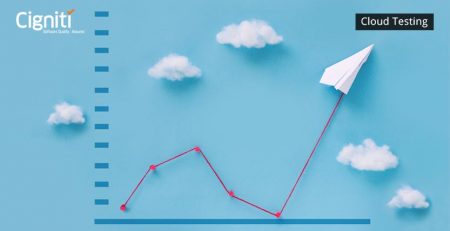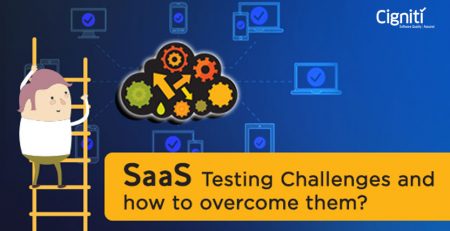Cloud Migration Assurance for Digital Payment Applications
The Need for Digital Payment Applications to be Migrated to the Cloud:
Like all other industries, the payment industry is also evolving. The driving factors for the evolution are cost-reduction, convenience, speed, and security. These are the reasons why cloud systems are being considered for digital payment applications as well.
The main reason for having digital payment applications in the cloud is that customers can pay from anywhere if they have internet access. The usage is not restricted to physical POS devices. Hence, as business grows, investment in physical devices can be reduced.
Reconciliation is also easier and faster in cloud-based systems. Placing orders, updating prices, sales, and data reports can always be accessed from anywhere.
If migrated and implemented in the correct way, a cloud-based digital payment system will bring added convenience to customers and retailers, and also provide enhanced data security and reduce maintenance costs.
Cloud Migration Assurance:
The digital payment application to be migrated to the cloud should run flawlessly in the cloud environment.
Before migration, the functional and application performance should be checked to baseline the results. Post-migration, it should be ensured that the configurations, architecture, functionality, and performance are enhanced or at par with the on-premise baseline results.
Cloud Migration Assurance should cover the below:
- Digital Payment Infrastructure and Network Assurance
- Digital Payment Application’s Functional and Performance Assurance
- Digital Payment Data Integrity and its Security Assurance
Digital Payment Infrastructure and Network Assurance
Information and data are stored on virtual servers, and these servers are managed by cloud computing vendors. The objective of this testing is to validate the architecture of the application in the cloud. The below should be ensured and tested as part of the digital payment infrastructure and network assurance:
- Cloud connectivity protocol, network connectivity, network bandwidth
- HSM connectivity – either cloud HSM or connectivity of cloud to HSM on-premise
- Payment scheme connectivity – data centers connecting to Visa, Mastercard should have good connectivity with the cloud environment
- Proper transmission of data through networks without dropping any packet
- No impact on any server/network level services after application installation
- Availability of the system and minimum downtime of the infrastructure
- Availability of the system for continuous deployment, continuous delivery and integration
- Regression and load testing on servers and database with different configuration changes
- Multi-Tenancy handling of the application with concurrent users accessing the system
- Disaster recovery considering cloud downtime and other contingent scenarios and ensure that there are means to recover any data loss
- Desired scalability, stability, resiliency, and responsiveness of the system is achieved
The Digital Payment Application and its Performance Assurance:
The digital payment application running in-house should be migrated to the cloud without impacting any end users. To ensure the same, the application may need some modifications to be compatible with the cloud environment.
The test strategy and plan should define the various types of testing to be conducted to ensure the application is working well. It should include functional testing, integration testing, performance testing, vulnerability testing, security testing, load and stress testing, and compliance testing. Testing should cover disaster recovery and business continuity plans as well. The right testing tools and frameworks need to be identified and used.
- The functional flow and data flow should remain unchanged.
- The frontend, web-based GUI should consume low bandwidth
- Application should be compatible across different operating systems
- Browser compatibility should ensure the performance of the application across different web browsers
- Performance of both frontend and backend processes should be evaluated based on historical data.
- Load and Stress Testing to ensure that the system can handle the volume of transactions as expected. Transaction Per second in-premise to be achieved in cloud environment as well.
- Security of application and data need to be ensured by testing the access control management.
- Robust backup plan should be present.
Digital Payment Data and its Security Assurance:
Data is an integral part of a live system, and it is very important to define the strategy and plan to migrate data from in-house to the cloud. The following points should be taken into consideration for testing data migration:
- All database components should be migrated
- Check for data integrity while transferring data
- Validate the data flow as per the requirements
- Data Access rules to be validated
- Testing privacy and security of data at rest, in use and during transit
- Assessing security vulnerabilities in the new environment
- Payment Card Industry Data Security Standards (PCIDSS) guidelines should be followed
- PCI DSS certification testing to be done if system stores card numbers
- PCI PIN certification testing to be done if system processes PIN data
- PCI 3DS certification testing to be done if system processes 3DS
- PCI CP certification testing to be done for issuing applications for card production functionality
- Payment Services Directive (PSD2), General Data Protection Regulation (GDPR) should be followed
- Data backup and its archival should be a part of test planning.
After the migration is completed, system monitoring and tracking through dashboards is essential to track application availability, throughput, latency, and accessibility to ensure the successful migration of the application.
Cloud migration Tools:
Proper tools to ensure successful migration are required to be shortlisted.
Some testing tools used for infrastructure and network assurance include Nessus, AppPerfect, WireShark to name a few. Some functional and performance testing tools include QAWerk, Sauce Labs, LoadStorm, App Dynamics, and BlazeMeter. DataGaps, QuerySurge are some of the tools which can be used to ensure proper data migration. Tools like Carbonite Migrate, Turbonomic are used for monitoring and tracking the migrated application.
Conclusion:
Pre-migration advisory, migration assurance, and post-migration validation are all part of Cigniti’s Cloud Migration Assurance Services. The Cloud Assurance Platform (CLAP) is a complete testing platform developed on top of our AI-enabled quality engineering platform, BlueSwan, to deliver testing services throughout the migration lifecycle.
We have proven experience across cloud platforms with an understanding of enterprise applications such as AWS, Azure, Google Cloud, and IBM Cloud.
We create value-added solutions with our Cloud assurance solution and deep BFSI domain knowledge, which will help you across the migration lifecycle. Our primary technical differentiators include Cigniti’s CLAP Platform, automated, reusable test scripts, and automated test strategy.
Cigniti’s Cloud Migration Assurance services can help you get the most out of your cloud transition for legacy payment applications.
Schedule a discussion with our Cloud Migration Assurance experts and BFSI Testing experts to learn more about cloud migration assurance in digital payment applications.





Leave a Reply